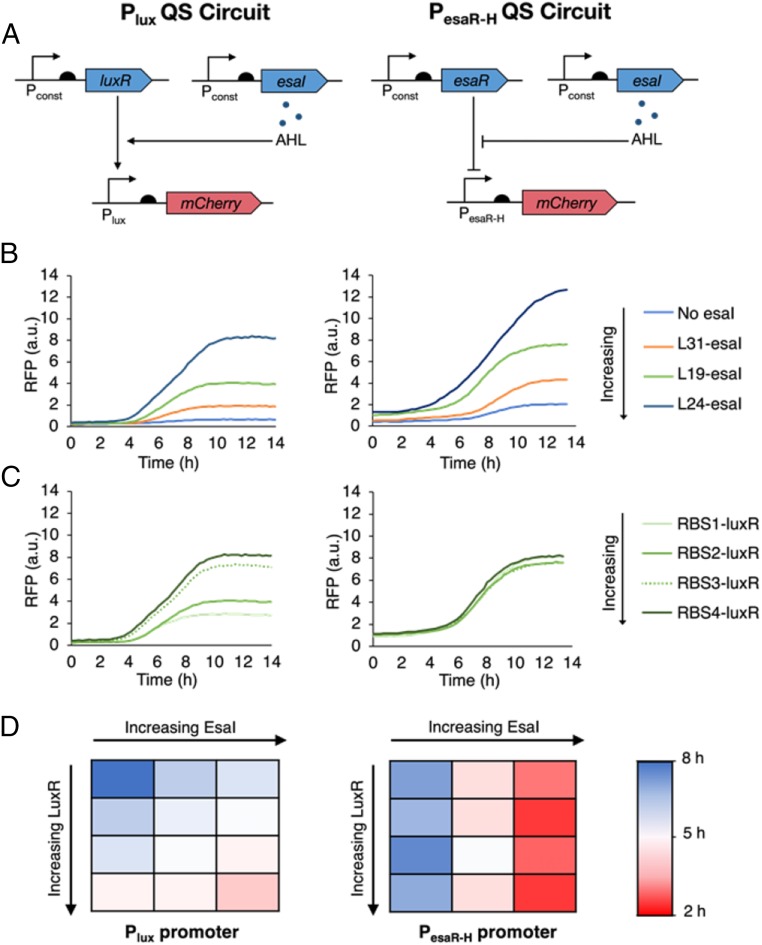Fig. 1.
Overview of lux and esaR QS circuits. (A) Architecture of the Plux (Left) and PesaR-H (Right) QS circuits. Transcription is activated from the Plux promoter when AHL-bound LuxR binds to the promoter. EsaR binds to the PesaR-H promoter to block transcription, and this repression is relieved in the presence of AHL. Here, the arrow and semicircle represent the promoter and RBS, respectively. (B) Representative fluorescence curves showing the response of Plux (Left) and PesaR-H (Right) to varying esaI expression levels. Increasing esaI expression levels results in earlier switching from both promoters. (C) Representative fluorescence curves showing the response of Plux (Left) and PesaR-H (Right) to varying luxR expression level. Increasing luxR expression results in earlier switching from the Plux promoter only. (D) Summary of the trends in switching time from the Plux and PesaR-H promoters varying luxR and esaI expression. Switching time was defined as the time at which fluorescence signal first surpasses a value equal to 90% of the maximum signal from the latest switcher (i.e., the lowest signal).

